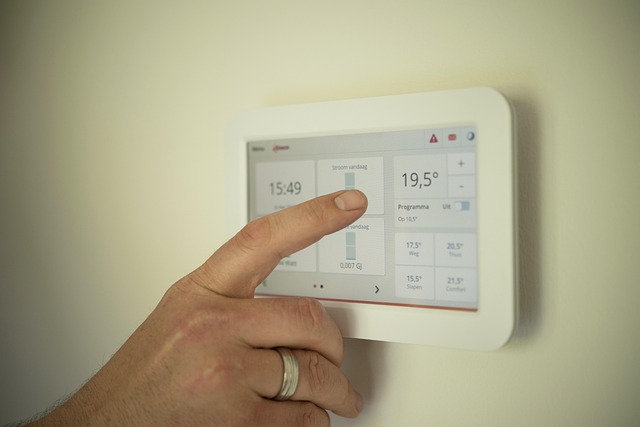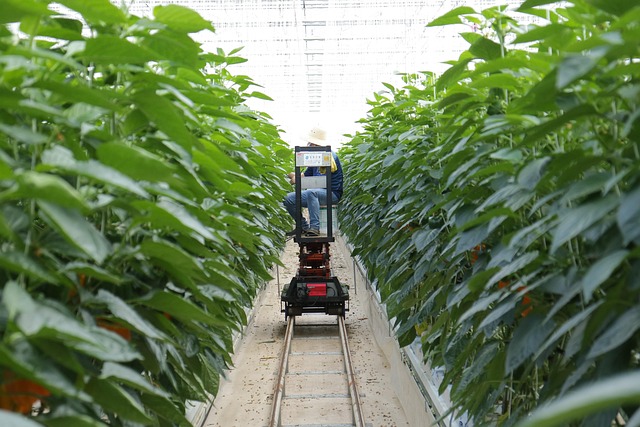Understanding smart thermostat basics is key for seamless installation, maximizing energy efficiency, and enhancing comfort. These digital devices learn temperature preferences, control heating/cooling remotely via apps or voice assistants, and save energy through predictive algorithms. Initial steps include locating a good sensor spot, disconnecting old thermostats, installing the new unit, and linking it to home Wi-Fi for remote control and scheduled programming, leading to reduced energy bills and improved comfort.
Looking to upgrade your home’s comfort with a smart thermostat but don’t know where to start? This guide is your one-stop resource. We review top models, highlighting their features and benefits for a seamless setup. From understanding smart thermostat basics to navigating installation processes step-by-step, we’ve got you covered. Discover how easy it is to control your home’s temperature with modern technology and make the switch today.
- Understanding Smart Thermostat Basics for Easy Installation
- Top Models: Features and Benefits for Seamless Setup
- Step-by-Step Guide: Navigating Installation Processes
Understanding Smart Thermostat Basics for Easy Installation

Understanding Smart Thermostat Basics is key to achieving easy installation and reaping the benefits of energy efficiency and comfort. A smart thermostat is a digitally connected device that learns your temperature preferences and automatically adjusts heating and cooling systems, offering precise climate control tailored to your needs. Unlike traditional thermostats, these devices allow you to connect smart devices for comprehensive control from anywhere using your smartphone or voice assistants like Alexa or Google Home.
This modern approach enables remote access, scheduling, and programming for a customized living environment. Whether you’re installing a smart thermostat for an apartment or any other space, having the right tools and following a detailed installation checklist are crucial steps. A well-planned setup ensures seamless integration with your home’s existing HVAC system and leverages the full potential of a smart thermostat for optimal energy savings and comfort throughout the year.
Top Models: Features and Benefits for Seamless Setup

When it comes to top models of smart thermostats, the market offers a range of options designed for seamless setup and easy smart thermostat installation. These devices are more than just temperature regulators; they’re gateways to comprehensive control over your home’s climate. Features like voice control integration with virtual assistants such as Alexa or Google Assistant allow you to adjust settings without even getting up from the couch. Many models also offer remote access via mobile apps, enabling you to monitor and control temperatures while you’re away, ensuring a comfortable environment upon your return.
Some advanced smart thermostats include features like predictive learning algorithms that automatically adjust settings based on your habits, leading to significant energy savings. Others support Z-Wave or Zigbee technology, allowing you to connect smart devices for comprehensive control over your home’s environment. While the initial cost of a smart thermostat might seem steep, considering factors like reduced energy bills and potential rebates from utility companies, the investment can pay off quickly. To give you an idea, the average how much does smart thermostat installation cost? ranges between £150 and £300, depending on the model and whether professional installation by a plumber Bromsgrove is included.
Step-by-Step Guide: Navigating Installation Processes

Navigating the installation process of a smart thermostat is simpler than you might think. Many modern models offer straightforward, step-by-step guides that walk you through every phase, from removing your old thermostat to programming your new one. Typically, the first step involves locating the ideal spot for the device—a place where it can sense room temperature accurately. Next, you’ll need to disconnect the power supply from your traditional thermostat and prepare your new smart unit for installation. This often includes connecting sensors or wires depending on the model. Once installed, most thermostats guide users through setup, where they link the device to their home Wi-Fi network.
This connection opens up a world of benefits, allowing you to control your home’s temperature remotely via a smartphone app. You can adjust settings from work, receive energy usage reports, and program schedules for optimal comfort and efficiency—all without stepping foot in your home. This level of control is a significant upgrade from traditional thermostats and illustrates how smart thermostat installation can lead to substantial energy savings and enhanced convenience.
In conclusion, a smart thermostat can significantly enhance your home’s energy efficiency and comfort through easy installation processes. By understanding the basics, comparing top models based on features, and following simple step-by-step guides, you can seamlessly integrate this technology into your home. With these strategies in place, you’re well on your way to saving money, reducing energy consumption, and enjoying a more comfortable living environment.
